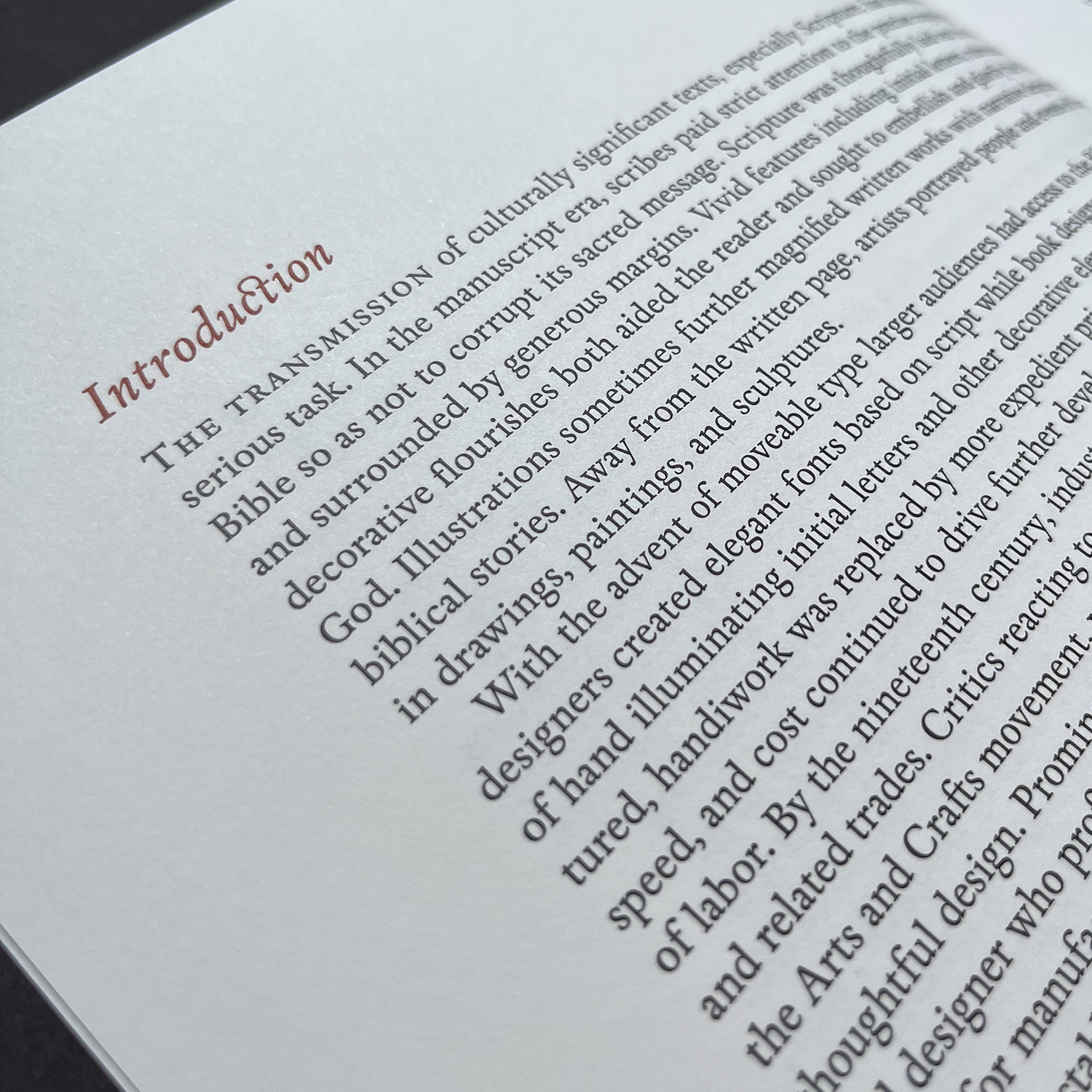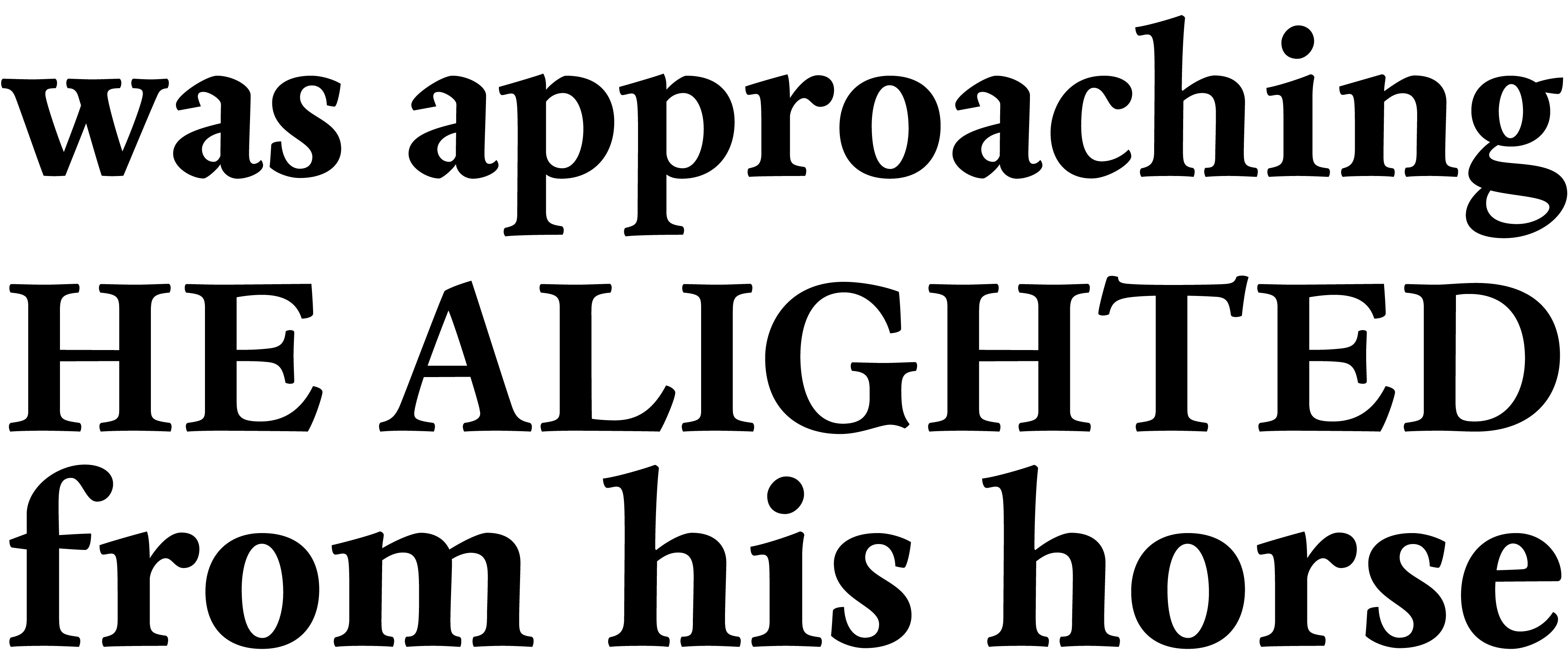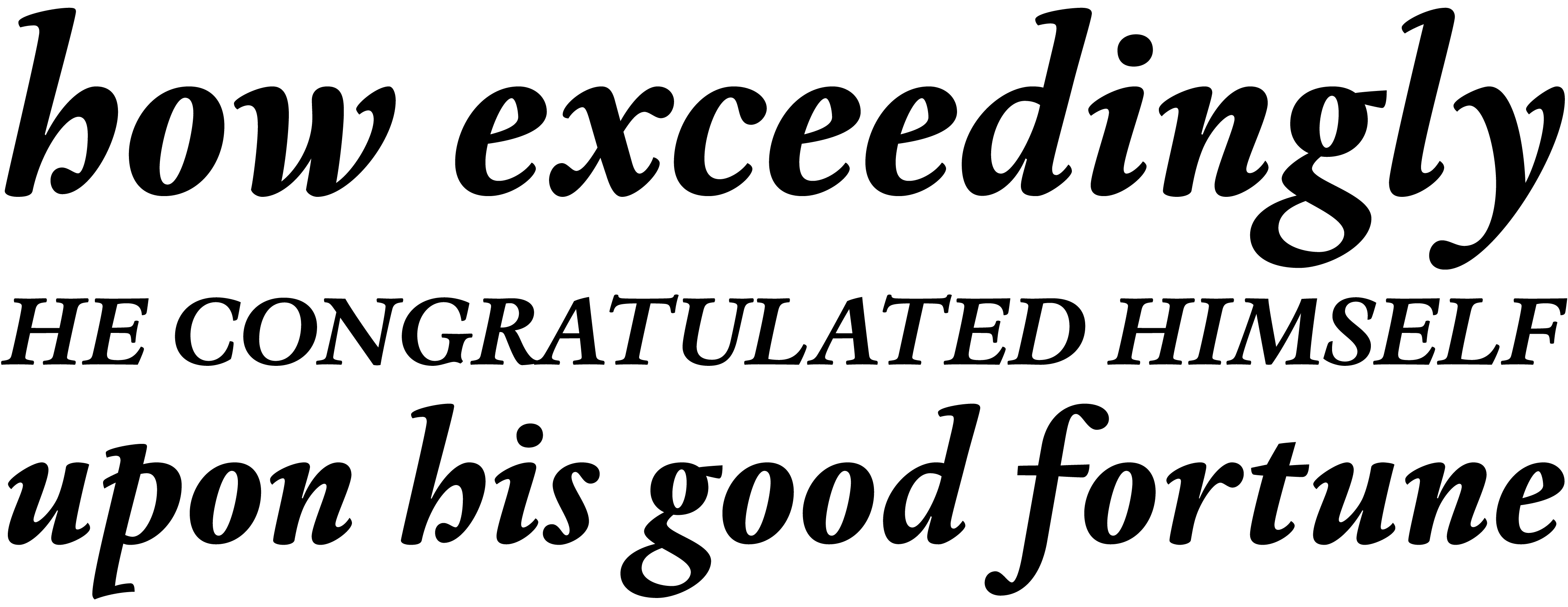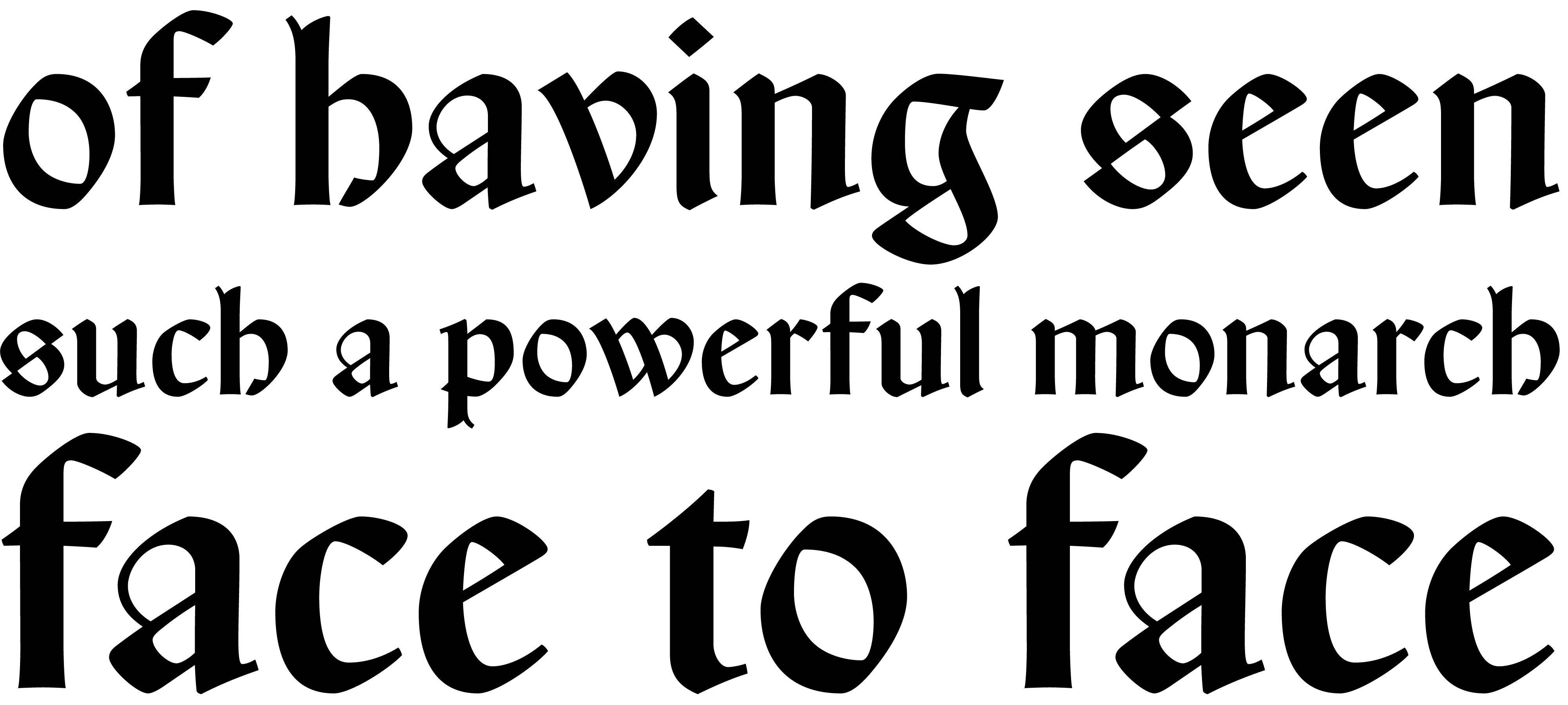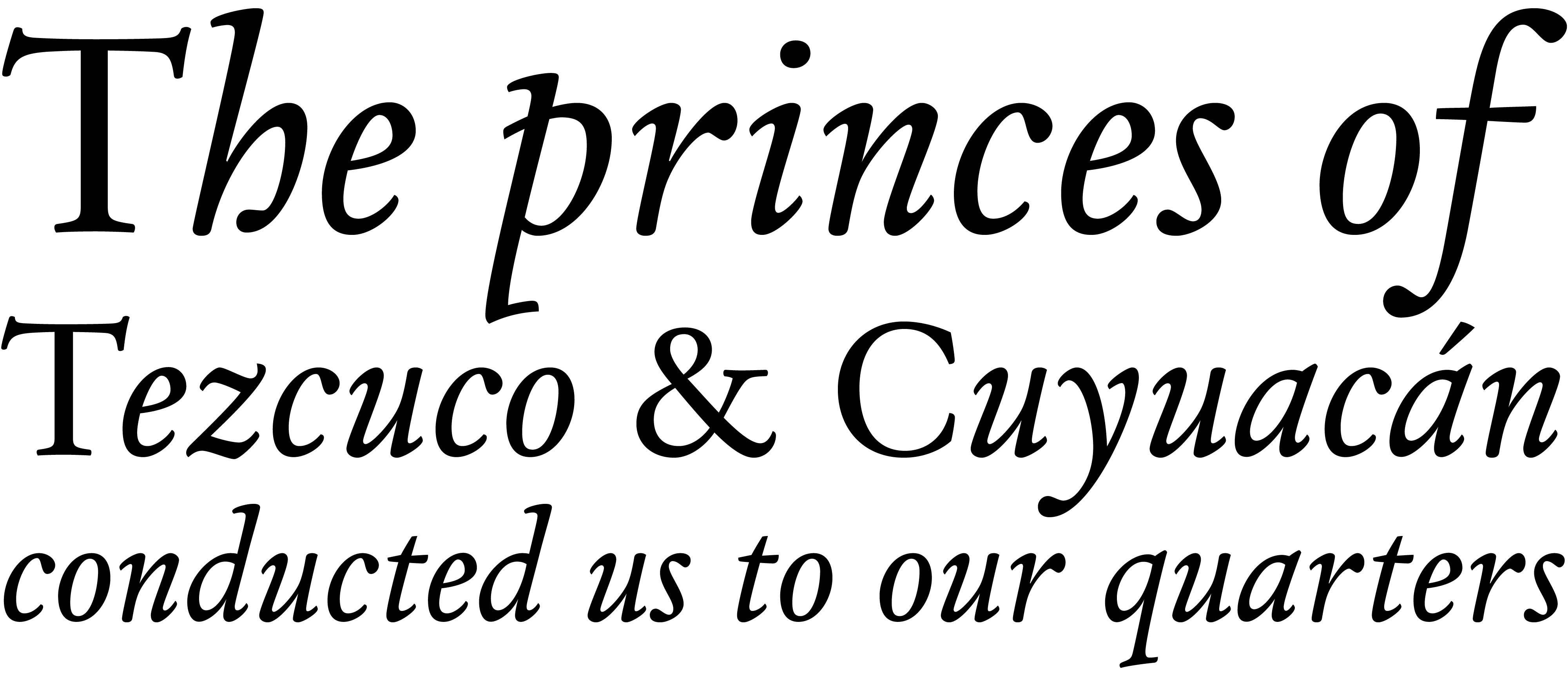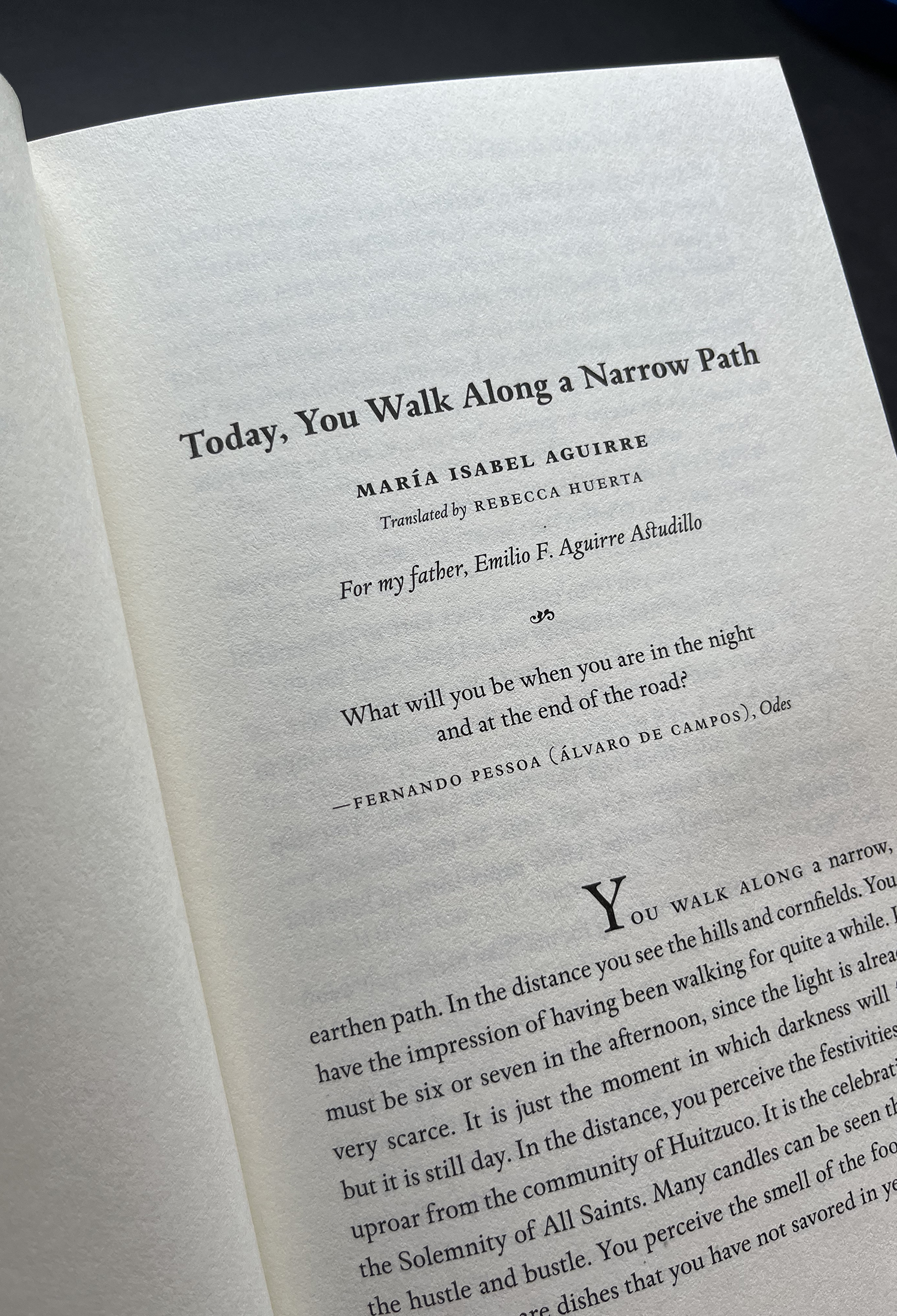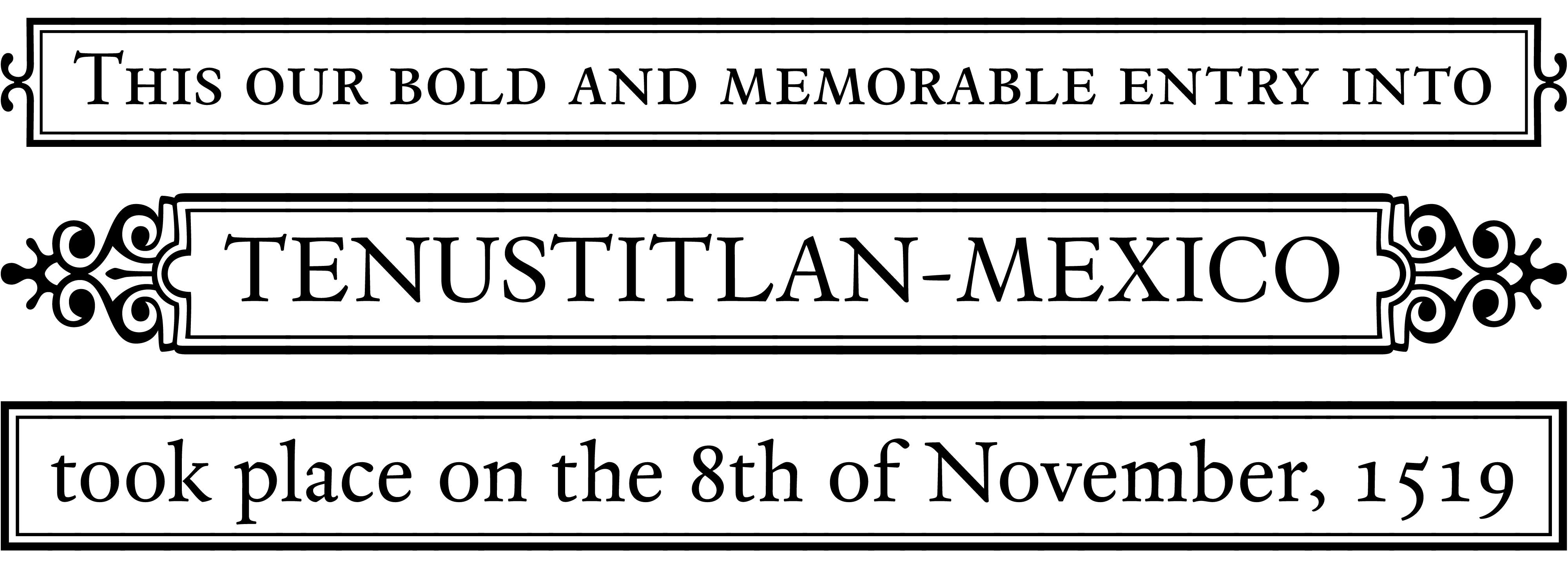Espinosa Nova
In 1521, Hernán Cortés and his men, allied with other indigenous peoples, defeated the Aztec Empire. Only eighteen years later, Juan Cromberger, a member of a dynasty of German printers living in Seville, sent the Italian Juan Pablos to Mexico to set up the first print shop in the New World. Pablos bought the shop from Cromberger in 1548 and in 1550 hired Antonio de Espinosa, who moved from Seville to Mexico City the following year. From then on, Pablos’s books improved vastly in quality and the repertory of typefaces was revamped: the proofs point to the new employee as the source of the changes, making him the first type designer in the Americas. In 1559, Espinosa opened his own workshop: his books are the pinnacle of old Mexican printing and the few examples that have survived are treasures highly appreciated by bibliophiles. However, no version existed that would have allowed the contemporary use of his typefaces, so Henestrosa designed this typographical recovery to honor his talent, and even wrote a book about it (Espinosa. Rescate de una tipografía novohispana [Espinosa. Reviving a New Spanish Typeface], Mexico City, Designio, 2005). ¶ En 1521, Hernán Cortés y sus hombres, aliados con otros pueblos indígenas, derrotaron al imperio azteca. Apenas 18 años después, Juan Cromberger —miembro de una dinastía de impresores alemanes radicados en Sevilla— envió a México al italiano Juan Pablos para fundar el primer taller de impresión del Nuevo Mundo. Pablos compró el taller a los Cromberger en 1548 y en 1550 contrató a Antonio de Espinosa, quien se trasladó de Sevilla a la Ciudad de México al año siguiente. A partir de entonces los libros de Pablos experimentaron un notable aumento de calidad y se renovó el repertorio de tipos: las pruebas apuntan a que algunos de ellos se debieron al nuevo empleado, lo que lo convertiría en el primer diseñador tipográfico de América. En 1559, Espinosa fundó su propio taller: sus libros son el punto más alto de la antigua imprenta mexicana y los pocos ejemplares que han sobrevivido son tesoros muy apreciados entre los bibliófilos. Sin embargo, no existía una versión que permitiera el uso contemporáneo de sus tipos, así que Cristóbal desarrolló este rescate tipográfico para honrar su talento, e incluso escribió un libro sobre el tema (Espinosa. Rescate de una tipografía novohispana, México, Designio, 2005).
